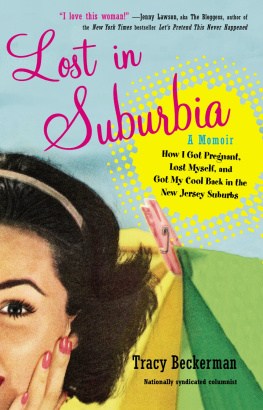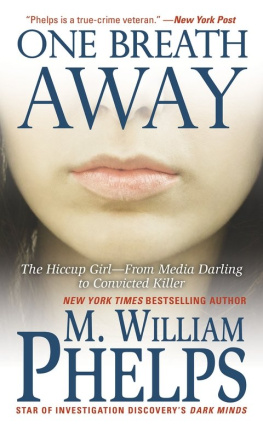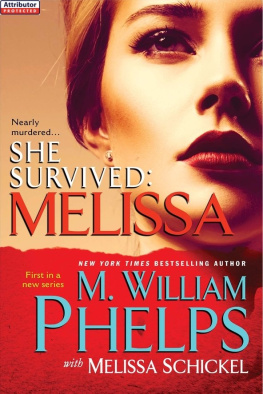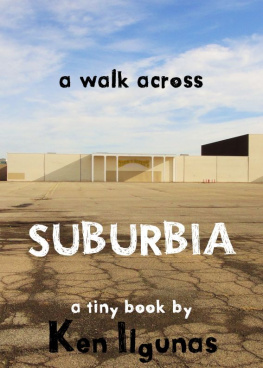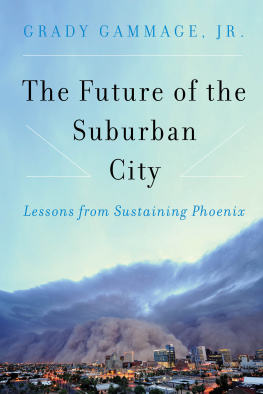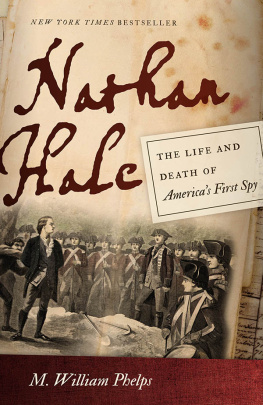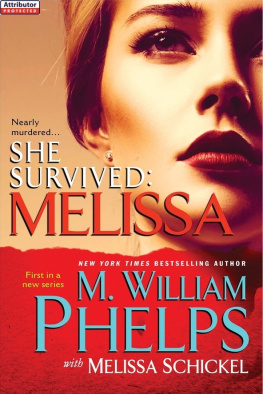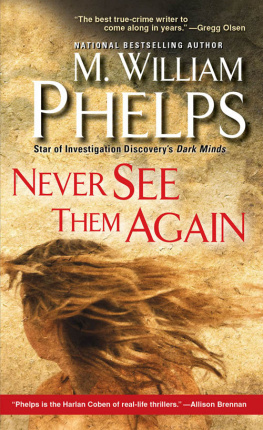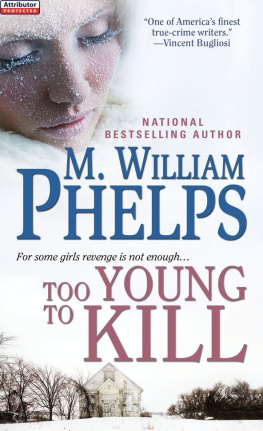Nicholas A. Phelps - Sequel to Suburbia: Glimpses of Americas Post-Suburban Future
Here you can read online Nicholas A. Phelps - Sequel to Suburbia: Glimpses of Americas Post-Suburban Future full text of the book (entire story) in english for free. Download pdf and epub, get meaning, cover and reviews about this ebook. year: 2016, publisher: MIT Press, genre: Politics. Description of the work, (preface) as well as reviews are available. Best literature library LitArk.com created for fans of good reading and offers a wide selection of genres:
Romance novel
Science fiction
Adventure
Detective
Science
History
Home and family
Prose
Art
Politics
Computer
Non-fiction
Religion
Business
Children
Humor
Choose a favorite category and find really read worthwhile books. Enjoy immersion in the world of imagination, feel the emotions of the characters or learn something new for yourself, make an fascinating discovery.

- Book:Sequel to Suburbia: Glimpses of Americas Post-Suburban Future
- Author:
- Publisher:MIT Press
- Genre:
- Year:2016
- Rating:5 / 5
- Favourites:Add to favourites
- Your mark:
- 100
- 1
- 2
- 3
- 4
- 5
Sequel to Suburbia: Glimpses of Americas Post-Suburban Future: summary, description and annotation
We offer to read an annotation, description, summary or preface (depends on what the author of the book "Sequel to Suburbia: Glimpses of Americas Post-Suburban Future" wrote himself). If you haven't found the necessary information about the book — write in the comments, we will try to find it.
Sequel to Suburbia: Glimpses of Americas Post-Suburban Future — read online for free the complete book (whole text) full work
Below is the text of the book, divided by pages. System saving the place of the last page read, allows you to conveniently read the book "Sequel to Suburbia: Glimpses of Americas Post-Suburban Future" online for free, without having to search again every time where you left off. Put a bookmark, and you can go to the page where you finished reading at any time.
Font size:
Interval:
Bookmark:
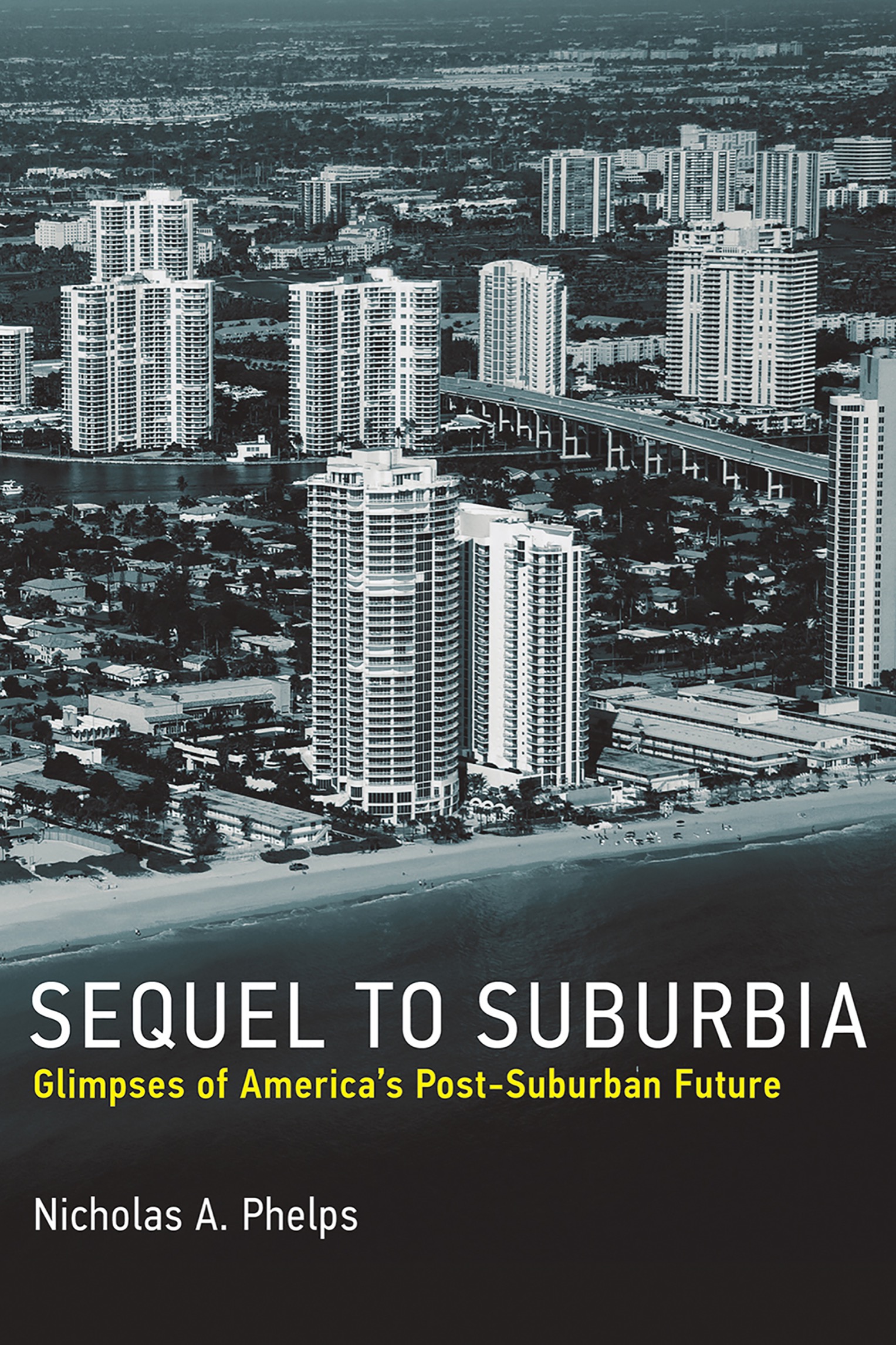
Sequel to Suburbia
Urban and Industrial Environments
Series editor: Robert Gottlieb, Henry R. Luce Professor of Urban and Environmental Policy, Occidental College
For a complete list of books published in this series, please see the back of the book.
Sequel to Suburbia
Glimpses of Americas Post-Suburban Future
Nicholas A. Phelps
The MIT Press
Cambridge, Massachusetts
London, England
2015 Massachusetts Institute of Technology
All rights reserved. No part of this book may be reproduced in any form by any electronic or mechanical means (including photocopying, recording, or information storage and retrieval) without permission in writing from the publisher.
Library of Congress Cataloging-in-Publication Data is available.
ISBN 978-0-262-02983-4
Epub 3.0
For Elizabeth McArthur Phelps
Contents
d_r0
Preface
My interest in the politics and planning of suburban transformation took shape in the early 1990s while I was working as a subcontractor consultant to Croydon Council in South London. Croydon had picked up on Joel Garreaus term edge city and cleverly sought to use it to market itself not as an edge city but as a city at the edge of London. I began my academic career as an economic geographer, and naturally my initial interests were framed in terms of the economic gravity of suburban economic nodes such as Croydon. However, Croydons opportunistic and overtly self-promotional use of the term edge city soon redirected my interests toward the politics and planning of the sorts of transformations taking place in, or planned for, suburbs in the United Kingdom and Europe. Some of these initial interests and, in particular, whether Europe had anything to compare to Americas edge cities were explored with colleagues in Post-Suburban Europe: Politics and Planning at the Margins of Europes Capital Cities, published in 2006 by Palgrave Macmillan.
This book draws on two related research projects undertaken from 2008 to 2010, which I was able to augment with funding from the Bartlett School of Planning in 2013. I am extremely grateful for this funding, without which the book certainly would not have been possible. The first of these research projects was funded by the United Kingdom Economic and Social Research Council under the grant title Governing Post-Suburban Growth during 20082010 (RES 062230924). One outcome of this research was the edited collection International Perspectives on Suburbanization: A Post-Suburban World? (published in 2011 by Palgrave Macmillan). That research took me to Tysons Corner, one of six rapidly developing nodes at the edges of capital cities that manifested development issues that piqued my research interests. At first glance, Tysons Corner, an unincorporated community in Fairfax County, Virginia, on the Capital Beltway, did not appear to offer an auspicious vantage point from which to reconsider aspects of existing urban theory. It was new, surely too new to yield any important insights. Or else it was somewhere and something destined to be overtaken by some other urban form as the urban frontier left it behind. However, contrary to what I had expected, my visits to Tysons Corner prompted me to question elements of existing urban theories. In particular, that some sites in Tysons Corner had already been through their third iteration of development surprised me. It got me to thinking about the land development process and whether it was all of one piece. The existence of lively debate and planning activity on how to remake Tysons Corner simply underlined these interests. For me, the Tysons Corner study became a way into what I believed was something of a bigger research agenda concerning what may come after suburbia.
This agenda certainly included questions about the character of settlements that could be considered post-suburban. It also included the question of what post-suburban politics might consist of. Luckily, help was at hand, for the historian Jon Teaford and postmodernist scholars of what might be called the Los Angeles school of urbanism in particular had provided something of an essential starting point in this regard. However, it also prompted grander thoughts on whether it might be possible to better attune the political economy approaches to suburbanization (of David Harvey and Richard Walker) and the city as a growth machine (of Harvey Molotch and John Logan) and the idea of urban political regimes (of Clarence Stein) to different types of settlements across complex metropolitan regions and the evolution of individual settlements over time.
A second research project, funded by the British Academy in 2010 under the title The Planning and Politics of Edge City Retrofit (SG100596), therefore sought to take these ideas further, by exploring the retrofitting of edge cities. This seemed like a great idea, in light of what was going on in Tysons Corner at the time and Ellen Dunham-Jones and June Williamsons 2008 publication, Retrofitting Suburbia (Wiley). However, finding examples of suburban retrofit that went beyond the level of individual architectural projects proved difficult. Finding edge city retrofits was also difficult, perhaps reflecting the fact that American suburban development had only briefly assumed this format, as Robert E. Lang has argued in his 2003 publication, Edgeless Cities (Brookings Institution Press). Eventually, after some scouring of the Internet, I alighted on two other sites to examine alongside Tysons Corner. These were the Kendall Downtown area, the development issues of which had already been quite widely reported, and Schaumburg, Illinois, which, although a place that had marketed itself strongly as an edge city, had not yet grappled seriously with ideas of transit-oriented density.
This book attempts to bring these concerns together. It extends and develops ideas first aired in articles written with Dave Valler and Andy Wood and published in the journals Environment and Planning A and Urban Studies, and by myself in Urban Affairs Review. In reflecting on the early days of this book, then, I owe a debt to a number of people whom I persuaded to come part of the way on what may have seemed a none-too-promising journey. Dave Valler and Andy Wood, Andrew Dowling, Nick Parsons and Dimitris Ballas, and Fulong Wu deserve special mention for sticking with it without a hint of doubt or regret. Sonia Roitman, Oleg Golubchikov, and Amparo Tarazona Vento have also been great friends and collaborators on research and publications closely related to the ideas discussed in this book. Doubtless they do not share all my views and should be spared any of the blame this book might incur. I am grateful to Miles Irving of the UCL Geography Departments cartographic laboratory for the graphic illustrations and for remaining patient with my requests. I am also grateful to Jim Morin and Dover, Kohl and Partners for granting permission to reproduce the images in chapter 5.
I have also benefited greatly from being part of an international network of scholars examining the phenomenon of global suburbanisms, work funded as a Major Collaborative Research Initiative of the Social and Humanities Research Council of Canada. This network has proved to be an enormously intellectually stimulating as well as an enjoyable and sociable group to be a part of. In particular I am grateful to Roger Keil, director of the network, for his boundless energy and for steadfastly supporting my research and writing on suburbanization.
Several kind folk took pity on a Brit researching America. Robert Bruegmanns correspondence helped greatly to shape some of the ideas contained in this book and with some of the Chicago metro area specifics. I would also like to thank Peter Muller, Richard Grant, Miguel Kanai, Robin Bachin, and Elizabeth Plater-Zyberk at the University of Miami for their hospitality, help, and guidance while I was in the field in Miami-Dade County in 2010, and Tim Chapin for his comments and suggestions on a draft of chapter 5, covering the Kendall-Dadeland situation. Fairfax County planners Linda Hollis and Sterling Wheeler and Schaumburg mayor Al Larson were extremely generous with their time and patient with my requests for meetings, while librarian Jane Rozek was a great help regarding the history of Schaumburg. During the period of 2008 to 2014, more than seventy other people gave their valuable time to talk to me in connection with my investigations. Though they are too numerous to mention here, the contributions of all are gratefully acknowledged.
Font size:
Interval:
Bookmark:
Similar books «Sequel to Suburbia: Glimpses of Americas Post-Suburban Future»
Look at similar books to Sequel to Suburbia: Glimpses of Americas Post-Suburban Future. We have selected literature similar in name and meaning in the hope of providing readers with more options to find new, interesting, not yet read works.
Discussion, reviews of the book Sequel to Suburbia: Glimpses of Americas Post-Suburban Future and just readers' own opinions. Leave your comments, write what you think about the work, its meaning or the main characters. Specify what exactly you liked and what you didn't like, and why you think so.

